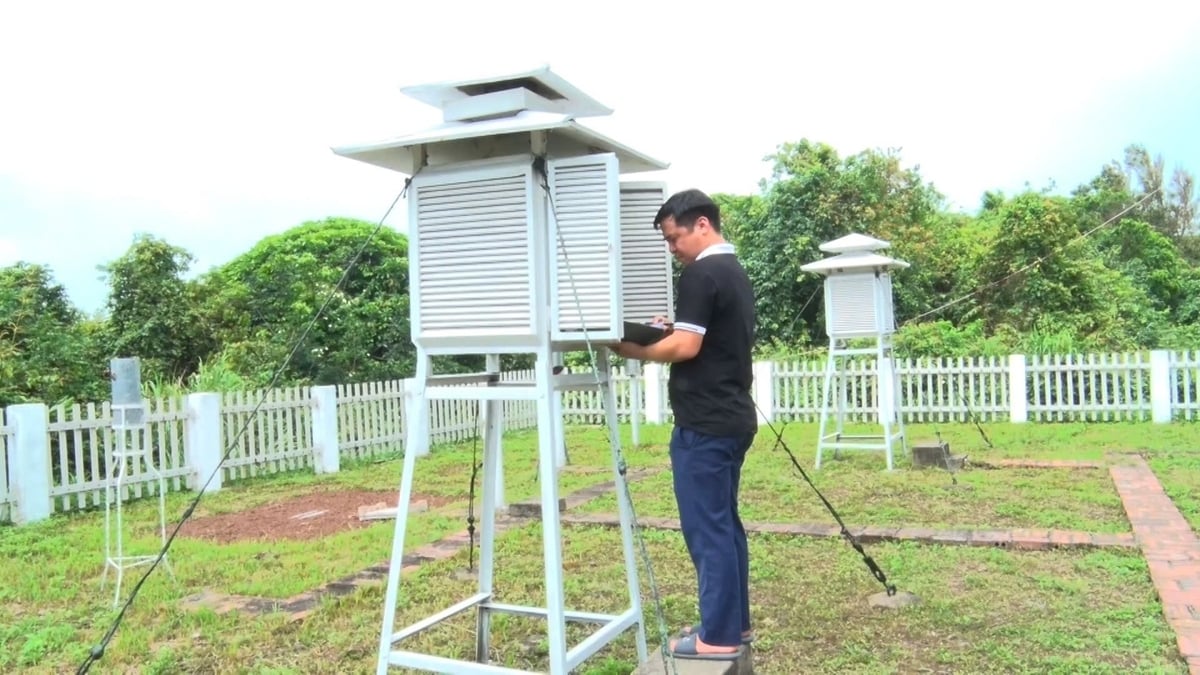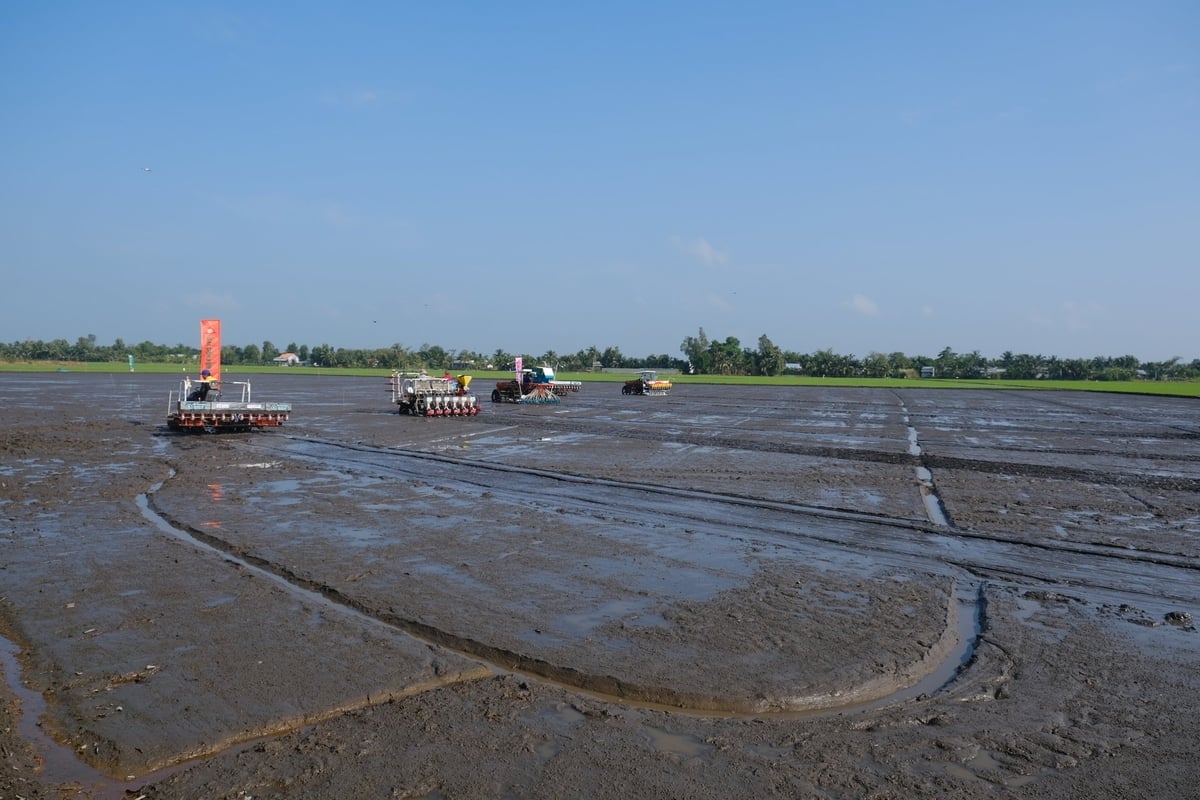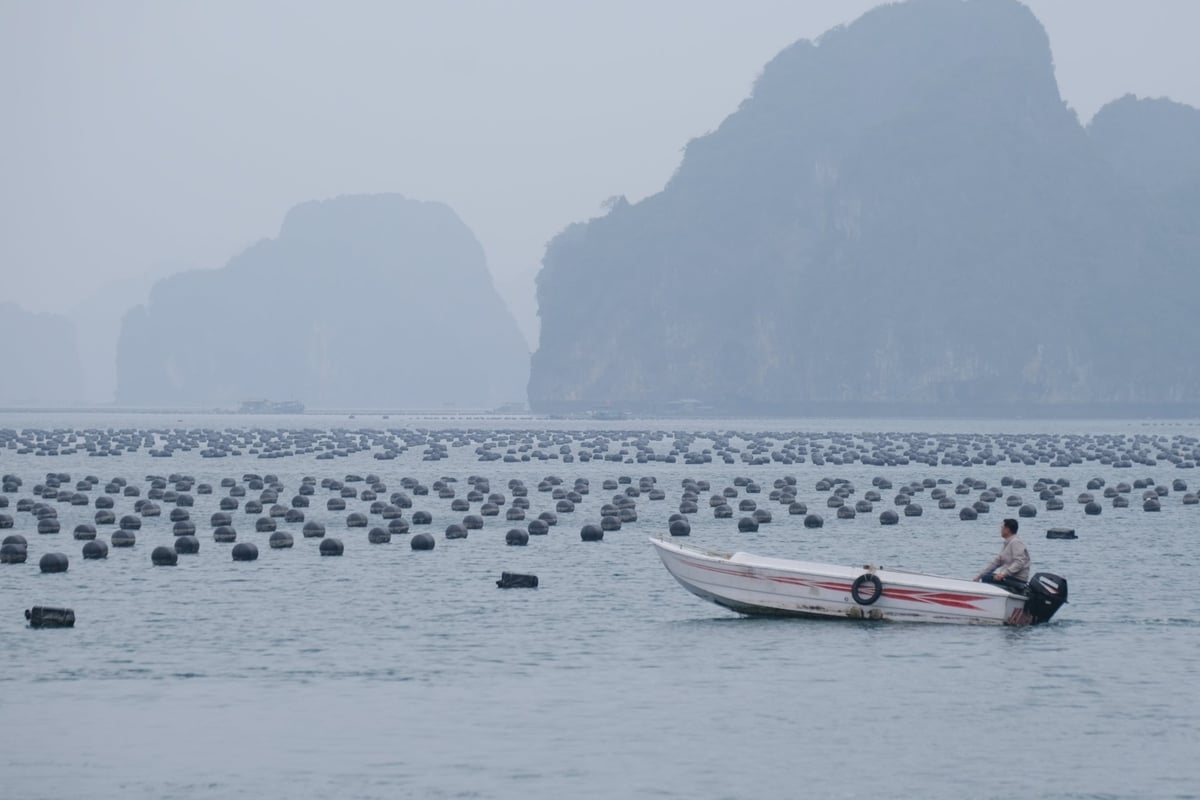October 28, 2025 | 13:36 GMT +7
October 28, 2025 | 13:36 GMT +7
Hotline: 0913.378.918
October 28, 2025 | 13:36 GMT +7
Hotline: 0913.378.918
After 1954, in the socialist North, meteorology and hydrology inherited just 15 surface meteorological stations, six hydrological stations, 41 water monitoring sites, and 27 rain gauges, many of which had ceased operation. In the South, under the former Saigon regime, only about 30 climate stations, two radiosonde stations, and a few hydrological and pilot sites remained.

Hydrometeorological observers record monitoring data. Photo: Quang Dung.
Between 1945 and 1975, with the country at war, the meteorology and hydrology sector not only performed technical tasks but also focused on developing standards, procedures, and regulations, such as surface meteorological coding rules, surface meteorological observation procedures in wartime, provisional rules for hydrological observation and editing, marine meteorological observation rules, and pilot observation regulations.
Along with forecasting for production and disaster prevention, with “agriculture as the central priority”, meteorological forecasts during this period also had urgent national defense tasks. Weather forecasts, including specialized marine forecasts, supported military operations on waterways and roads. Flood forecasts helped with pontoon bridge construction and protecting artillery positions along rivers. These forecasts were produced through close cooperation between central and local forecast agencies, resulting in accurate, localized predictions that met the immediate needs of the armed forces and civilians.


Wind and rain measuring devices, recording hydrometeorological conditions of the Hydrometeorological Department. Photo: Quang Dung.
From 1976 to 1990, meteorology and hydrology struggled with the same shortages plaguing the wider economy: outdated infrastructure, limited equipment, and scarce manpower. A major turning point came in 1991, when Directive 249 from the Chairman of the Council of Ministers (now the Prime Minister) called for strengthening meteorology and hydrology to better serve disaster prevention and economic development.
Following this directive, the General Department of meteorology and hydrology developed the program Enhancing the Capacity and Effectiveness of Meteorology and Hydrology for Socio-Economic Development, which included five key goals, such as ensuring the capacity and quality of meteorological and hydrological investigations and monitoring air and water quality. Starting in 1992, the program received significant state investment, combined with the sector’s determination, gradually reversing the decline of the observation network.
Forecasting for agriculture has always been a cornerstone mission. On March 7, 1986, a formal cooperation agreement between the General Department of meteorology and hydrology and the Ministry of Agriculture and Food Industry established meteorological services specifically for farming. Provincial and municipal forecast centers began delivering tailored predictions on floods, droughts, cold spells, pest outbreaks, crop calendars, and livestock productivity.

Weather forecasting for agriculture is one of the core and traditional tasks of the hydrometeorology sector. Photo: Kien Trung.
Today, Vietnam’s meteorology and hydrology network includes over 1,800 stations and observation points nationwide, manned by 1,500 observers working from remote highlands to offshore islands. Numerical weather prediction models from Germany (HRM), the United States (WRF), and the European ECMWF are now integrated into operations at the National Center for Hydro-Meteorological Forecasting. Forecasts cover 600 towns and cities, with improved warnings on storms, cold air surges, and extreme rainfall.
Marine forecasting has also been expanded, particularly for the Hoang Sa (Paracel) and Truong Sa (Spratly) archipelagos, serving both economic development and national sovereignty.

Staff working at the National Center for Hydro-Meteorological Forecasting. Photo: Quang Dung.
The sector has modernized forecast bulletins to be clearer, more detailed, and more accessible to the public. Storm maps are easier to interpret, warnings are issued 30 minutes to an hour earlier than in the past, and risk-based disaster warnings are now embedded in reports. These improvements have been widely praised by both central and local authorities.
Since the 1980s, specialized forecasts have supported large-scale infrastructure projects. At Hoa Binh and Tri An hydropower plants, long-term hydrological predictions guided the timing of river blockages, ensuring safety and efficiency. Forecasts also supported coal mining at Coc Vi, apatite extraction in Lao Cai, and later the operation of major reservoirs such as Thac Ba, Da Nhim, Hoa Binh, and Tri An. These forecasts helped optimize water use for power generation, irrigation, and flood control.


The Hydrometeorological sector has provided specialized data and foundations for sectors to develop plans, schemes, and orientations for sectoral development. Photo: Kien Trung.
On the seas, forecasts have aided fisheries, maritime transport, construction, defense, and especially offshore oil and gas exploration, earning the trust of both domestic and foreign corporations operating in the East Sea (internationally known as the South China Sea).
The current national forecasting and warning system integrates domestic observation networks, international data, communication systems, data processing, and forecast operations. Forecasting is carried out by the National Center for Hydro-Meteorological Forecasting, seven regional centers, and 56 provincial centers, providing a robust foundation for agriculture, disaster prevention, and national development.
Translated by Linh Linh

(VAN) Viet Nam’s rice exports struggle after the Philippines halted imports. Beyond the efforts of businesses, government contracts play a key role.

(VAN) An Giang Province calls on the people to combat IUU fishing; violations may result in a VND 1 billion fine or imprisonment of 15 years.

(VAN) Sludge treatment has been a major challenge for Hanoi, which may seem minor at first glance but has a profound impact on sustainable development.
/2025/10/24/1814-3-091309_468.jpg)
(VAN) With an estimated value of around $10 trillion by 2028, Halal is becoming a promising new market for Vietnam's agricultural and food exports.

(VAN) The Ministry of Agriculture and Environment has issued Decision No. 4082/QD-BNNMT on the Ministry’s plan to implement the Prime Minister’s Decision No. 1422/QD-TTg dated November 19, 2024.

(VAN) The Prime Minister has requested the Ministry of Agriculture and Environment to coordinate with the Government Office in compiling weekly reports on the results of combating IUU fishing by ministries, sectors, and localities.
/2025/10/22/2133-3-181753_14.jpg)
(VAN) In Tan Thuy commune (Vinh Long), the 'party members mentoring fishermen' model has shown clear effectiveness, helping fishing vessels operate in compliance with regulations and eliminating violations in foreign waters.